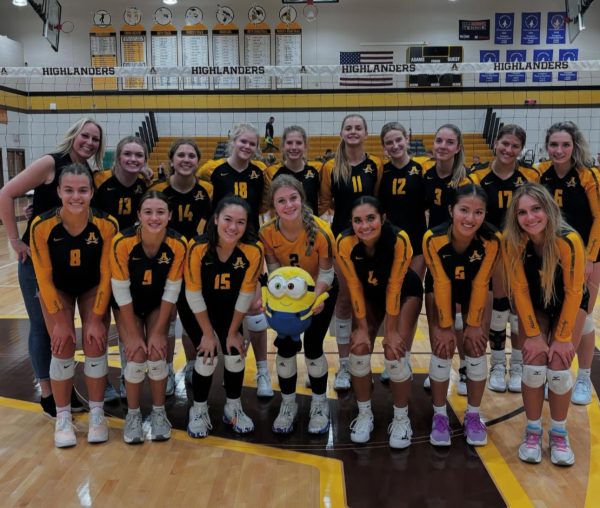Technology Integrated in Learning: Helping or Hurting?
In the year 2018, technology has become even more prevalent in today’s society, especially in schools. Whether it includes computers, smartboards, iPads, laptops, or cell phones, almost everything in the classroom relies on technology in some way or another. The use of technology is seen as a useful resource in schools because of its immediate access to an unlimited amount of information. Although technology is supposed to strengthen the learning experience for students, some say it distracts and disconnects students instead. Despite the many supposed benefits of computers in schools, is there an overemphasis on technology in the classroom?
Living in a digital age, technology has been integrated in the classroom because of various benefits. Computers enhance the classroom by creating an interactive learning experience for students. Many teachers at Adams use games like Kahoot it and Jeopardy for review. Students usually enjoy this because it gives them a break from regularly class lecture time. Students are also typically encouraged to use their phones in class for further research because an unlimited amount of information is available in a single click.

Students using laptops in school.
Other benefits of technology in school include the fact that it makes group projects and assignments easier for students due to helpful programs, like Google Docs. Not only do they save time and energy, but they also open the door for students to think outside of the box. Computers and the internet give a plethora of options on how to display information they have learned. This gives students an opportunity to use their creativity when it comes to presentations. Whether it includes prezi, powerpoint, piktochart, or videos, there are so many ways students can present the knowledge they have researched. Professionals in the tech-world also testify that students can greatly benefit from this exposure.
“The 21st century view of learner success requires students to not only be thoughtful consumers of digital content, but effective and collaborative creators of digital media, demonstrating competencies and communicating ideas through dynamic storytelling, data visualization and content curation,” said David Goodrum, director of academic technology and information services, Oregon State University.
Getting students to use technology in schools does not only make learning more fun, but it is also developing life skills. There is no doubt that we live in a digital world, so getting students comfortable with it will help them in the long run.
According to the NMC Horizon Report: 2017 Higher Education Edition. “It’s about generating a deeper understanding of the digital environment, enabling intuitive adaptation to new contexts and co-creation of content with others.”

Students often use cellphones in class.
With this being said, it is important that students have exposure to the world of technology.
Technology has clearly influenced our world for the better, offering many tools to make tasks easier and more efficient. But along with all the good, there are also some negative effects. The first being that it has allowed students to cheat with ease. There is no denying the cheating epidemic in Adams High School. Students can easily use their phones during a test if the teacher is not paying attention, take pictures of answers and send them to others, and find answers to assignments online. Phones have made cheating almost effortless. With that being said, is the risk of academic dishonesty worth the benefits of having technology in the classroom?
Another reason technology can have a negative impact on students is because it is a distraction to many. When students have laptops, phones, or tablets out, it often diverts their attention from the task at hand. The use of these devices also disconnects students from social interactions. It is not an unusual sight to walk in a classroom and see everyone with their heads down, looking at their phones. Studies show that students who often use phones during class tend to suffer the consequences of grades dropping and difficulty to stay engaged when learning. All of these disadvantages have impacted schools to some extent. So after researching the impact, let us hear from the students and teachers about their opinion on technology in school.
“If it is used to benefit the teacher and the class, then I’m all for it”, said senior Christy Villalonga.
Many students at Adams have the same viewpoint on this matter. When asking English teacher Mrs. Danielson about this topic, this is what she had to say:
What do you think the role of technology should be the classroom?

Student using tablet.
“I think it should be used to help teach lessons; as it shouldn’t be the primary focus. If it can enhance the lesson, like showing videos, then it can be helpful,” said Danielson.
Do you think there is an overemphasis on technology in our school?
“Maybe in some cases. I know that in the classes I teach I don’t rely on it a ton. But I think it is useful in classes like science, where there is a lot more opportunity to use technology than in other classes,” said Danielson.
Students and teachers both seem to view technology as a useful resource in school, as long as it does not get in the way.
Given the pros and cons of technology, many can agree that there are some definite advantages but also some downfalls. Emphasizing the use of technology in the classroom gives students the opportunities of having instant access to information, allowing students to express their knowledge in a more creative way, and gives them experience they will need in the digital world. But with all the conveniences it brings, there are also some adverse consequences. Technology gives students the chance to cheat, disconnects them from social interactions, and creates difficulty in paying attention. All things considered, the emphasis of technology in schools brings a lot of good to the table. As long as the emphasis on technology is controlled and it is not the main focus, schools can appreciate innovative resources.









